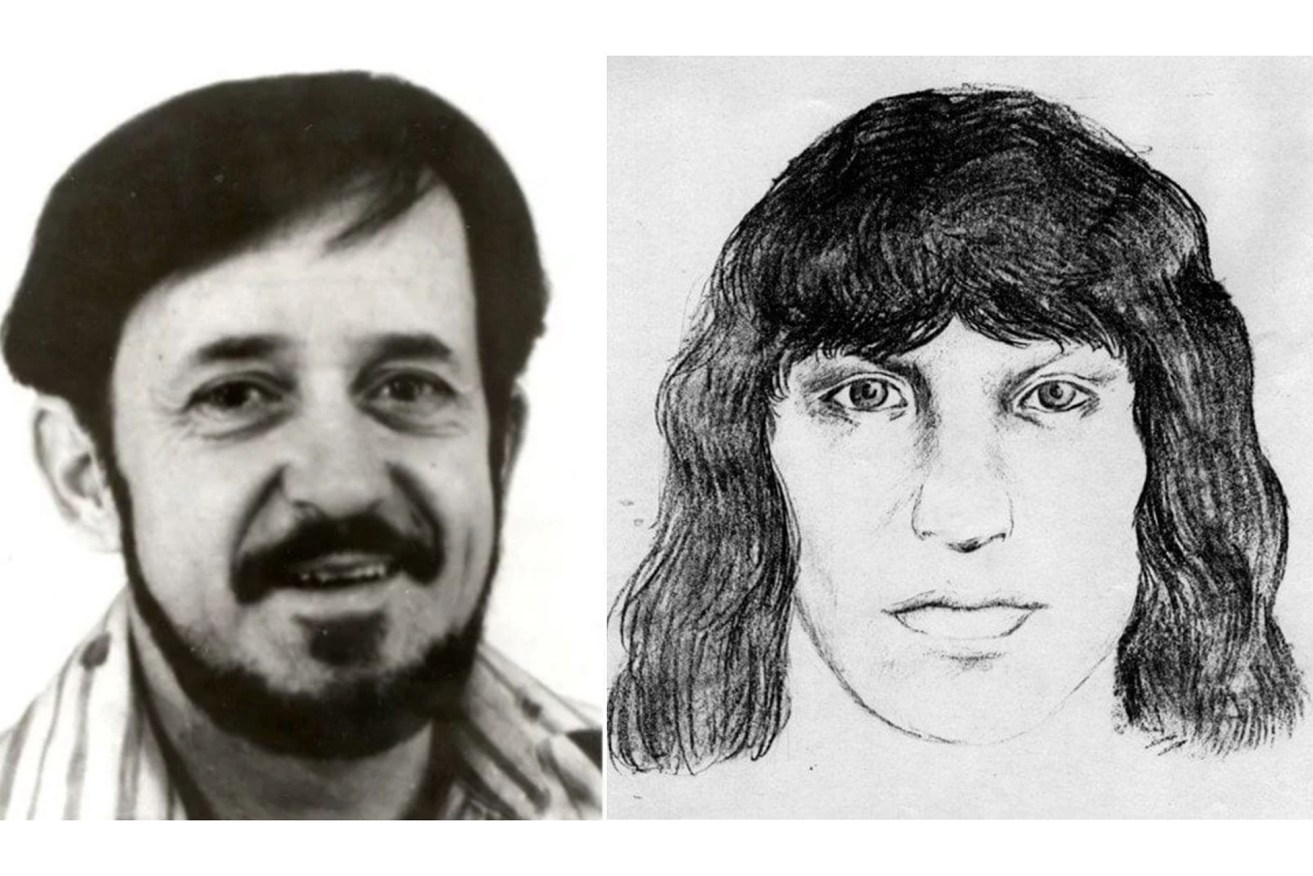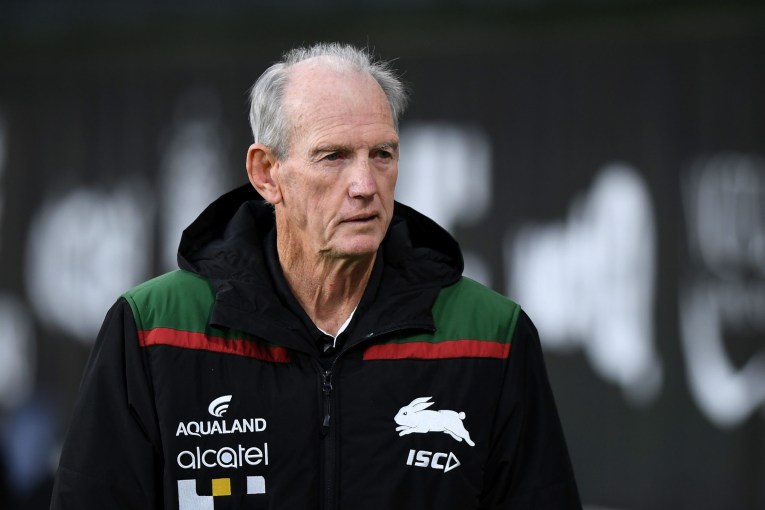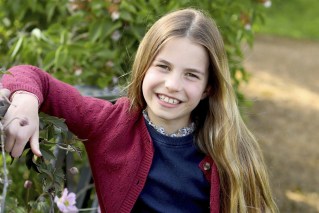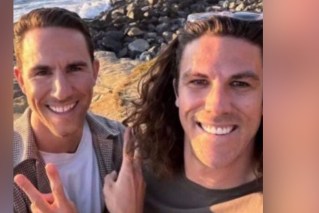Gold Coast detectives use blood spilled 40 years ago to create the face of a killer
A brutal 1982 murder of a man beaten and stabbed to death in a Gold Coast apartment could be solved through genetic genealogy, cold case detectives say.

A supplied undated combined image shows (left) Owen Edward Crabbe who was murdered on the Gold Coast in 1982 and (right) a sketch of a man seen with Eddie on Friday May 28, 1982. Police are launching a fresh public appeal for information, announcing a new reward, and releasing a digital facial image created from DNA technology to help identify a man in who may have been involved in the murder of Owen Edward Crabbe (Eddie). (AAP Image/Supplied by Queensland Police)
Brisbane storeman Owen ‘Eddie’ Crabbe took a Greyhound bus for a weekend away in Surfers Paradise on May 29, 1982.
Crabbe withdrew more than $600 from his bank account and told people he planned to spend the weekend with a man named Michael.
The 57-year-old identified as gay after ending his marriage and was booked to stay the weekend at Beachcomber hotel.
He visited several nightclubs but was last seen alive early on the Sunday of that weekend, wearing a dark sports coat as he left Connections club with the man police believe was his killer.
By Monday, May 30, Crabbe had failed to check out and his bloodied body was discovered by cleaners in the 27th-floor apartment.
He had been violently beaten and fatally stabbed in the neck.
There was no sign of forced entry but there was evidence of a violent struggle during which Crabbe’s attacker was severely injured, leaving his blood in the apartment.
Four decades later, cold case detective senior sergeant Tara Kentwell hopes the blood left behind – and a $500,000 reward – could provide vital clues in the hunt for Crabbe’s killer.
“A large amount of blood belong believed to belong to the offender was located on Eddie’s body and on surfaces within the apartment,” Kentwell said on Wednesday.
“A full DNA profile of the male person has been generated from the blood but at this time does not match any person recorded on national and international law enforcement or genetic genealogy DNA databases.”
Police have turned to criminologist and Newcastle University forensic anthropologist associate professor Xanthe Mallett to to help identify the killer through genetic genealogy.
Using the murderer’s DNA to comb genetic databases, the team has developed the suspect’s genealogy tree.
“We uploaded his samples to both of those databases two years ago now, and we’ve had a family tree developed of 15,000 individuals in that time – So we’re talking a huge database,” Mallett said.
“It’s complicated … but we’ve got no close matches.”
However, scientists believe the killer is of European descent and created a digital facial image from DNA technology.
The science has been used by law enforcement worldwide.
Detectives from the US used genetic genealogy to arrest the ‘Golden State Killer’ who murdered 13 people and raped more than 50 women across California.
“I firmly believe this case could be solved 40 years later,” prof Mallett said.
“We’re getting great results in the US every week. We get a cold case solved, you know, (that are) 30 to 40 years old.
“So it may seem like a long time ago, but this case is certainly solvable.”
Crabbe’s son Tracey, was just 13 when his father was murdered and is hopeful of answers.
“I know it’s 40 years ago (but) whether you were at one of the clubs that night (or) you saw my father or someone who was a bit not quite right, please come forward,” Tracey said.
“It’s the community thing to do. …”












